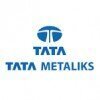Filter interviews by
Slr Metaliks Fire & Safety Officer Interview Questions, Process, and Tips for Experienced
Slr Metaliks Fire & Safety Officer Interview Experiences for Experienced
1 interview found
I applied via Company Website and was interviewed in Oct 2021. There was 1 interview round.
Interview Questionnaire
6 Questions
- Q1. What Type of fire extinguisher
- Ans.
There are different types of fire extinguishers for different types of fires, such as water, foam, CO2, dry powder, and wet chemical.
Water fire extinguishers are suitable for Class A fires involving solid materials like wood, paper, and textiles.
Foam fire extinguishers are effective for Class A and B fires, which involve flammable liquids like petrol and oil.
CO2 fire extinguishers are used for Class B and electrical fi...
- Q2. What is fire triangle
- Ans.
The fire triangle is a model that illustrates the three elements necessary for a fire to occur: fuel, heat, and oxygen.
The fire triangle consists of three components: fuel, heat, and oxygen.
Fuel refers to any material that can burn, such as wood, paper, or gasoline.
Heat is the energy required to raise the temperature of the fuel to its ignition point.
Oxygen is necessary for the combustion process to occur.
Removing any ...
- Q3. What is the cooling method
- Ans.
The cooling method in fire and safety involves the use of water, foam, or gas to reduce the temperature and extinguish the fire.
Water is commonly used as a cooling method in firefighting, as it absorbs heat and cools down the fire.
Foam is another effective cooling agent, as it forms a blanket over the fire and prevents oxygen from reaching it.
In some cases, gases like carbon dioxide or halon are used to displace oxygen...
- Q4. What is meaning of nfpa
- Ans.
NFPA stands for National Fire Protection Association.
NFPA is a non-profit organization that develops and publishes fire safety codes and standards.
It provides guidelines for fire prevention, protection, and suppression.
NFPA codes are widely adopted and used by fire departments, building owners, and safety professionals.
Examples of NFPA codes include NFPA 101 (Life Safety Code), NFPA 70 (National Electrical Code), and N...
- Q5. Classification of fire
- Ans.
Fires are classified based on the type of fuel involved and the appropriate extinguishing methods.
Fires are classified into five main classes: Class A, Class B, Class C, Class D, and Class K.
Class A fires involve ordinary combustible materials like wood, paper, and cloth.
Class B fires involve flammable liquids or gases like gasoline, oil, and propane.
Class C fires involve energized electrical equipment.
Class D fires in...
- Q6. What is safety
- Ans.
Safety refers to the measures and precautions taken to prevent accidents, injuries, and hazards in order to protect individuals and property.
Safety involves identifying and assessing potential risks and hazards.
It includes implementing preventive measures and safety protocols.
Safety also involves providing proper training and education to individuals.
Regular inspections and maintenance are essential for ensuring safety...
Interview Preparation Tips
Top trending discussions






Interview questions from similar companies

Safety Officer Interview Questions & Answers
SHYAM METALICS AND ENERGYposted on 4 Jul 2024
I applied via Referral and was interviewed in Jun 2024. There were 2 interview rounds.
(2 Questions)
- Q1. FACTORY ACT 1948
- Q2. ACCIDENT INVESTIGATION
(2 Questions)
- Q1. EXPECTATION asked and negotiating badly.
- Q2. Only negotiating nothing else.
Interview Preparation Tips
Slr Metaliks Interview FAQs
Tell us how to improve this page.
Slr Metaliks Interviews By Designations
- Slr Metaliks Engineer Interview Questions
- Slr Metaliks Assistant Manager Interview Questions
- Slr Metaliks Blast Furnace Operation Engineer Interview Questions
- Slr Metaliks Fire & Safety Officer Interview Questions
- Slr Metaliks Manager - HR & Administration Interview Questions
- Slr Metaliks Mechanical Maintenance Engineer Interview Questions
- Slr Metaliks Production Graduate Engineer Trainee Interview Questions
- Slr Metaliks Senior Technician Interview Questions
- Show more
Interview Questions for Popular Designations
- Fire & Safety Supervisor Interview Questions
- Safety Engineer Interview Questions
- Safety Manager Interview Questions
- Senior Safety Officer Interview Questions
- Safety Officer Interview Questions
- Fireman and Safety Interview Questions
- Senior Safety Engineer Interview Questions
- Safety Supervisor Interview Questions
- Show more
People are getting interviews through
Interview Questions from Similar Companies
|
Engineer
92
salaries
| ₹2 L/yr - ₹5.2 L/yr |
|
Senior Engineer
65
salaries
| ₹2.7 L/yr - ₹7 L/yr |
|
Executive
34
salaries
| ₹4 L/yr - ₹8.4 L/yr |
|
Deputy Manager
31
salaries
| ₹5 L/yr - ₹12 L/yr |
|
Junior Engineer
31
salaries
| ₹2 L/yr - ₹4 L/yr |

Tata Steel

JSW Steel

Steel Authority Of India

Jindal Steel and Power
Calculate your in-hand salary
- Home >
- Interviews >
- Slr Metaliks Interview Questions >
- Slr Metaliks Fire & Safety Officer Interview Questions for Experienced








